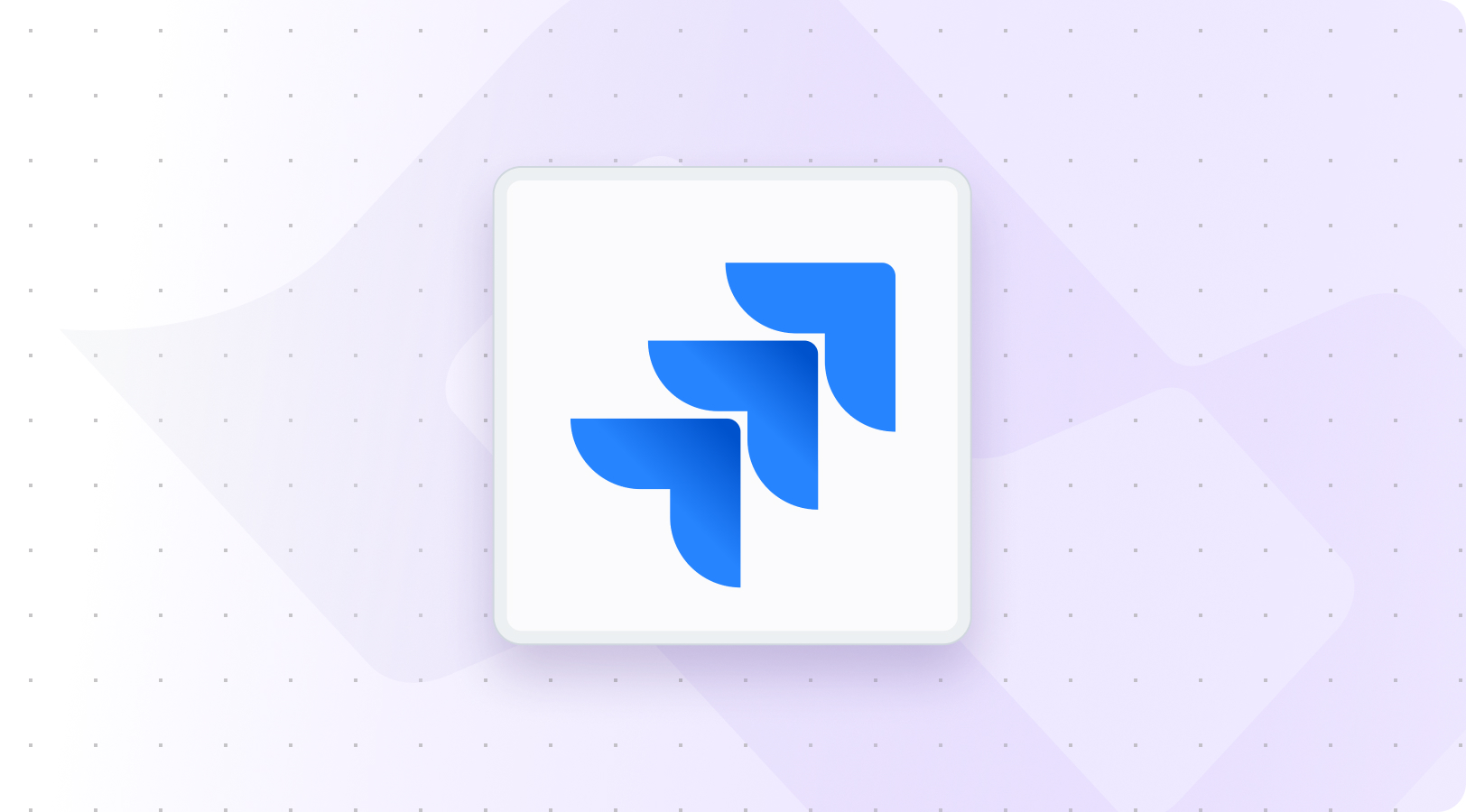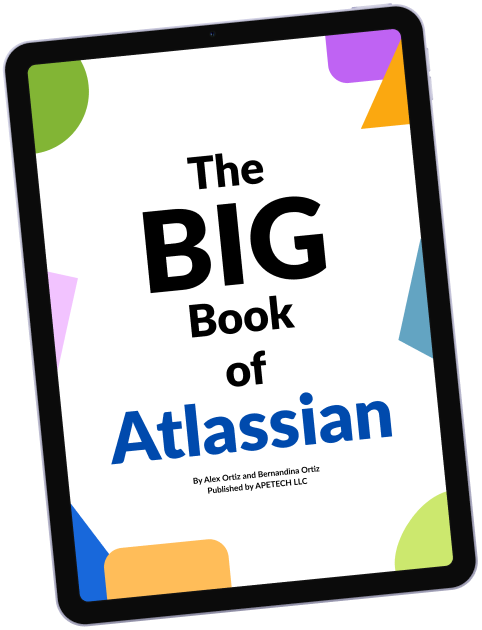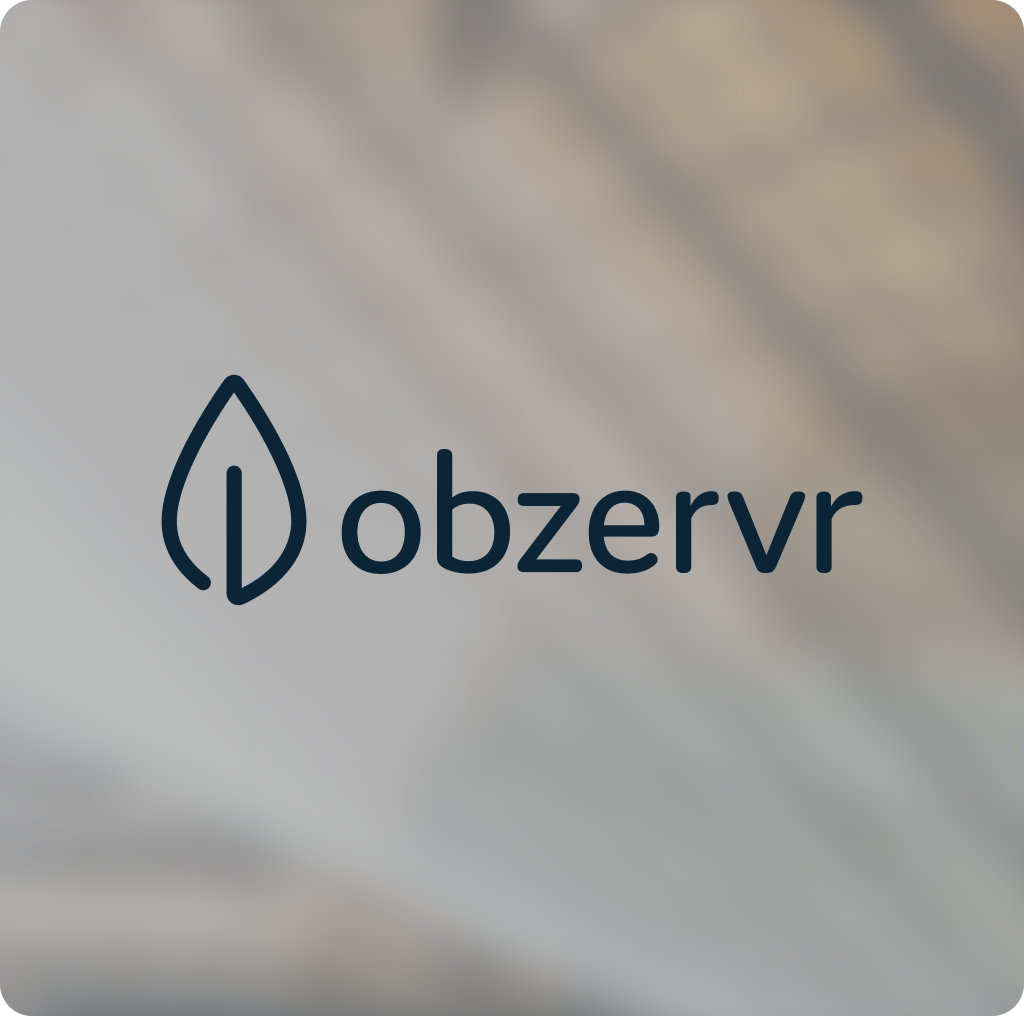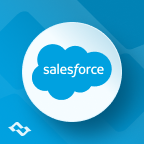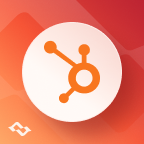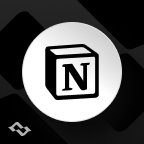If you’re involved in software development, project management, or agile methodologies, chances are you’ve heard of Atlassian Jira.
Jira is a popular project management tool that’s used by teams all over the world to plan, track, and manage their work. According to the State of Agile Report, two-thirds of respondents use Atlassian Jira to manage Agile projects (66%). Surprisingly, the number dropped from 72% reported in 2021.
But what exactly is Jira, and how does it work? In this blog post, we’ll dive into the details of Atlassian Jira and explain why it’s become such an essential tool for many organizations.
What is Atlassian Jira?
At its core, Atlassian Jira is a web-based tool that helps teams plan, track, and manage their work. It was created by Atlassian, an Australian software company, in 2002. Since then, Jira has become one of the most popular project management tools in the world, with millions of users across a wide range of industries.
Jira is designed to be flexible and customizable, which makes it suitable for many different types of projects and workflows. At its most basic level, Jira provides a set of features that allow you to create and organize tasks, assign them to team members, and track their progress. However, Jira also includes a wide range of advanced features that can help you manage more complex projects, such as agile methodologies, continuous delivery pipelines, and service desk workflows.
Evolution of Jira Design
Jira’s design evolved very much, from its first release in 2002. There is an interesting blog post on Atlassian Community, written by Rachel Wright (here is the link) explaining the whole journey in detail. In this post, I’ll share just a piece of the evolution of Jira design.
Here is how Jira looked at the very beginning:
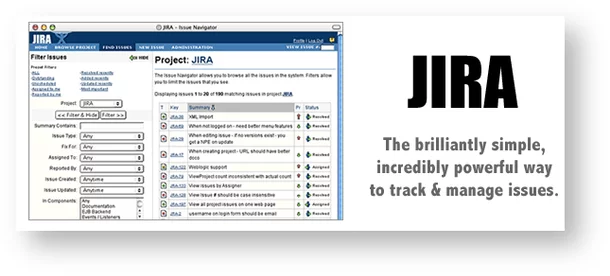
In 2011, Atlassian released a cloud-based version of Jira, called “Jira OnDemand”. It looked and worked exactly like the Jira self-hosted version (we have the same approach at getint).
In 2012, we could see the view we’re very familiar with now – Scrum Boards.
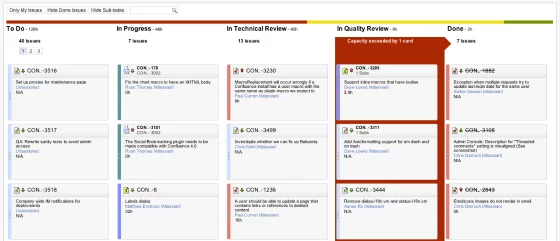
Fast forward to 2015, when Atlassian decided to split Jira into two applications – Jira Core, and Jira Software. The UI started to look even more familair with what we can see in the modern version,
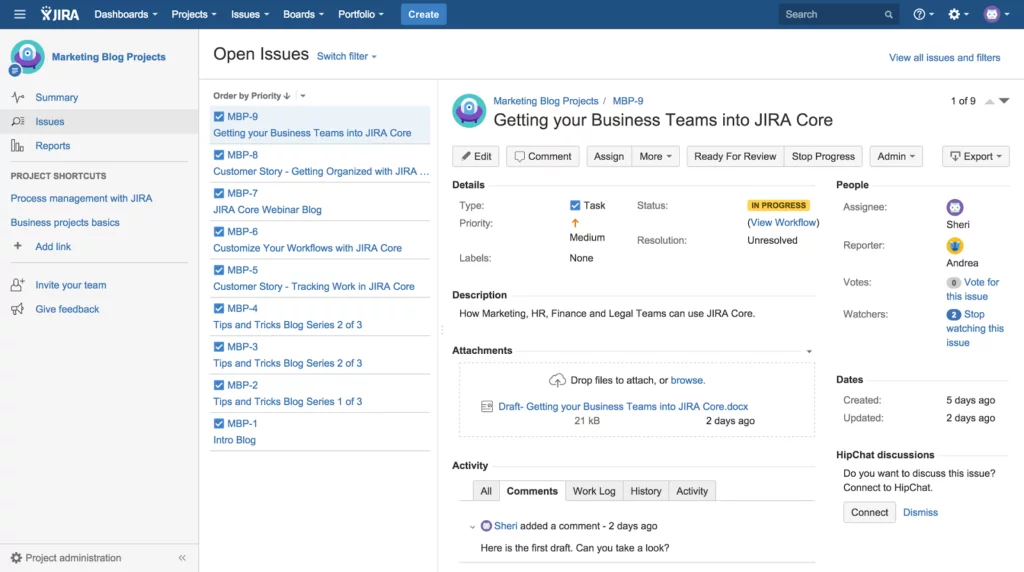
What are the key features of Jira?
Jira includes a wide range of features that are designed to help teams manage their work more effectively. Here are some of the key features of Jira:
- Task management: Jira allows you to create tasks or issues, assign them to team members, and track their progress. Tasks can be organized into projects, and you can create custom workflows to define how tasks move through your team’s process.
- Agile methodologies: Jira is particularly well-suited to agile methodologies such as Scrum and Kanban. Jira includes a range of features that support agile workflows, such as story points, sprint planning, and burndown charts.
- Collaboration: Jira includes a range of collaboration features that allow team members to work together more effectively. For example, you can mention team members in the comments or use the “@mention” feature to notify them of updates.
- Customization: Jira is highly customizable, which means you can adapt it to suit your team’s specific needs. You can create custom workflows, fields, and issue types, and you can use Jira’s APIs to integrate them with other tools and systems.
- Reporting: Jira includes a range of reporting features that allow you to track your team’s progress and identify areas for improvement. For example, you can create custom dashboards and use Jira’s built-in reports to monitor your team’s velocity and burndown.
- Service desk: Jira Service Desk is a separate product that’s built on top of Jira. It provides a range of features that allow you to manage customer requests and support tickets, including a self-service portal, SLAs, and a knowledge base.
How does Jira work?
Jira is a web-based tool, which means you can access it from anywhere with an internet connection. When you log into Jira, you’ll see a dashboard that provides an overview of your projects and tasks. From there, you can navigate to different parts of the system, such as projects, issues, and reports.
Jira is organized around projects, which are collections of tasks or issues that relate to a specific goal or objective. For example, you might have a project for developing a new feature, a project for fixing bugs, and a project for providing customer support. Within each project, you can create tasks or issues, which represent individual pieces of work that need to be completed.
Tasks or issues in Jira are highly customizable, which means you can define custom fields, workflows, and issue types to match your team’s specific needs. For example, you might create a custom field to track the estimated time it will take to complete a task, or you might define a custom workflow to reflect your team’s specific process for completing tasks.
One of the key benefits of Jira is its support for agile methodologies. Jira includes a range of features that are specifically designed to support agile workflows, such as Scrum and Kanban. For example, you can use Jira’s story points feature to estimate the relative complexity of different tasks, and you can use Jira’s sprint planning and burndown features to manage your team’s progress during sprints.
Jira also includes a range of collaboration features that allow team members to work together more effectively. For example, you can use Jira’s comments feature to discuss tasks with team members, and you can use the “@mention” feature to notify team members of updates. Jira also includes a range of notification options, so team members can stay up-to-date on the latest developments in a project.
The power of the Atlassian Ecosystem
The powerful ecosystem of Jira makes it a great choice for every team. With more than 1,000 apps, you can customize Jira as you wish. When purchasing a Jira, a company is usually paying X amount of money for the Jira license, and a similar amount for apps to customize Jira according to the specific needs of the organization. That approach encourages Vendors, and Partners to deliver high-quality, secure, and unique add-ons.
Read more on the beauty of the Atlassian ecosystem.
Jira integrations
Jira integrates well with other collaboration software tools like ServiceNow, Azure DevOps, Zendesk, Asana, Monday.com, and GitLab thanks to the getint platform.
It also integrates with the most popular tools used by the IT teams such as Slack, Trello, Gliffy, Miro, and Bitbucket. That means that if you need to cooperate with another company, or your internal teams prefer to use different tools – you will be able to make it all work great with Jira in place.

Jira is the most popular collaboration software tool
Using Brand24, our teams conduct research to check which collaboration tool is the most popular, and which has the most positive sentiment. When it comes to popularity, Atlassian’s Jira was a clear winner. Read more here.

How can Jira help your team?
Jira can be a powerful tool for teams that need to manage complex projects and workflows.
Some of the key benefits of using Jira include the following:
Improved visibility: Jira provides a centralized location for managing your team’s work, which can improve visibility and make it easier to track progress and identify bottlenecks.
Customizability: Jira is highly customizable, which means you can adapt it to suit your team’s specific needs and processes.
Collaboration: Jira includes a range of collaboration features that allow team members to work together more effectively, which can improve productivity and reduce communication overhead. One of the most common tools to enhance collaboration is the getint integration platform that allows Jira to be integrated with other tools, used by other teams or contractors like Azure DevOps, ServiceNow, or Zendesk.
Agile support: Jira includes a range of features that are specifically designed to support agile workflows, such as Scrum and Kanban.
Reporting: Jira includes a range of reporting features that allow you to track your team’s progress and identify areas for improvement, which can help you optimize your team’s performance over time.
Different Jira products
Jira is offered in four packages:
- Jira Software includes the base software, with agile project management features (previously Jira Agile) for Software projects.
- Jira Work Management (previously Jira Core) is designed for generic project management, i.e. business projects for HR, legal, and other business teams.
- Jira Service Management is used by IT operations or business service desks for Service projects.
- Jira Align is for strategic product and portfolio management.
Jira Software
Jira Software is primarily designed for software development teams and provides a range of features such as issue tracking, agile boards, project and portfolio management, and customizable workflows. It is used for managing software development projects and workflows.
Jira Software is based on the Jira Work Management platform (Jira Core), which means it includes all of its functionality plus other features.
Jira Work Management
Jira Work Management is a newer tool from Atlassian, designed for business teams and non-technical users. It provides features such as customizable request forms, team calendars, and process automation. It is used for managing a range of business projects, such as marketing campaigns, HR processes, and event planning.
While Jira Software is more focused on software development projects, Jira Work Management is more suited to business teams who require a more streamlined and simplified project management solution. Both tools can be customized to meet the specific needs of different teams and projects, but the target users and features are different.
Jira Service Management (Jira Service Desk)
In addition to the core Jira product, Atlassian also offers a separate product called Jira Service Desk. Jira Service Desk is built on top of Jira and provides a range of features that are specifically designed to support customer service and support workflows. For example, Jira Service Desk includes a self-service portal that allows customers to create and track support tickets, as well as a knowledge base that can help customers find solutions to common problems.
Jira Service Desk also includes a range of automation and reporting features that can help you manage your support workload more effectively. For example, you can set up SLAs to ensure that support tickets are resolved in a timely manner, and you can use Jira’s reporting features to identify areas for improvement in your support processes.
Jira Align
Jira Align is an enterprise Agile planning platform that helps organizations align their business strategy with their software development activities. It is designed to help large and complex organizations scale Agile practices across multiple teams, departments, and locations.
Jira Align provides a range of features to help organizations plan, track, and measure their Agile initiatives at scale. It includes portfolio-level planning and management, program and team-level planning and execution, and real-time visibility and reporting.
The platform helps teams collaborate and communicate effectively across the organization, ensuring that everyone is aligned with the same goals and objectives. Jira Align also provides a range of integrations with other popular tools and systems, including Jira Software, Confluence, and Slack.
Jira Align is typically used by large organizations with multiple teams and departments working on complex software development projects. It is particularly useful for organizations that have adopted Agile practices and are looking to scale them across the entire organization.
Conclusion
Atlassian Jira is a powerful project management tool that can help teams manage complex projects and workflows more effectively. Jira includes a range of features that allow you to create and track tasks, collaborate with team members, and monitor progress over time. Whether you’re using agile methodologies or traditional project management techniques, Jira can help you stay organized and productive. If you’re interested in learning more about Jira, Atlassian offers a range of resources, including documentation, training, and community forums, that can help you get started.

